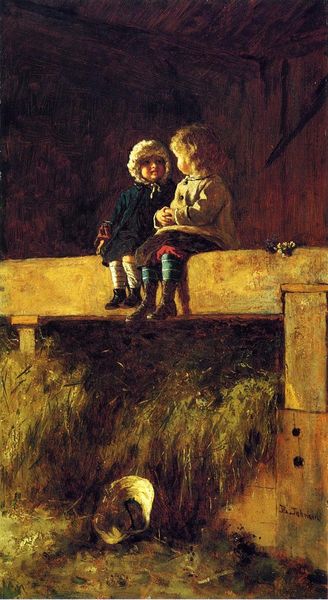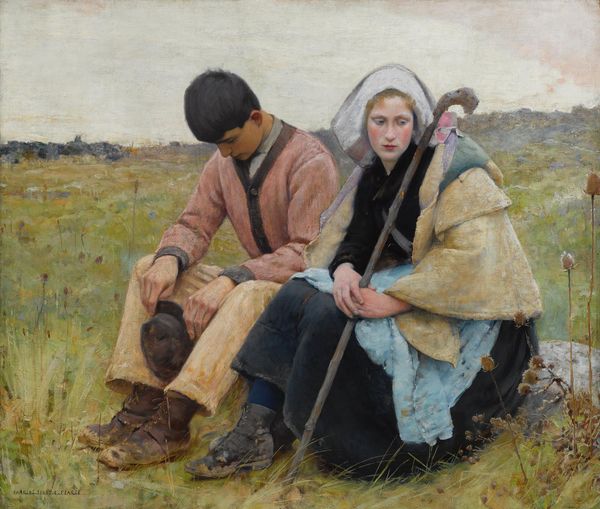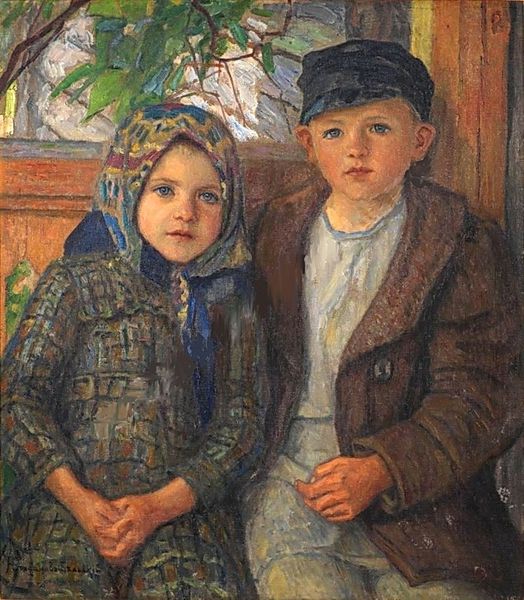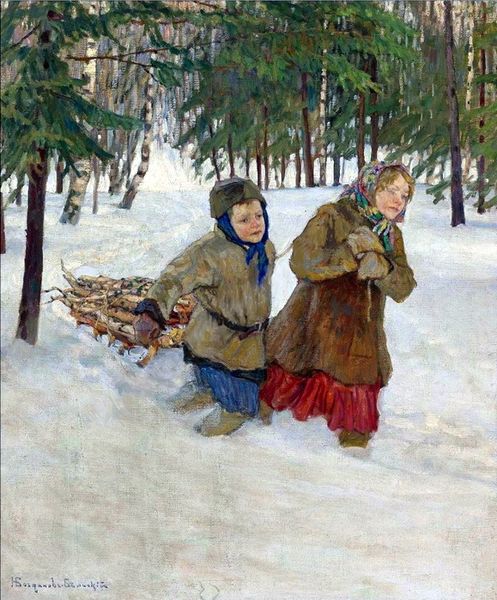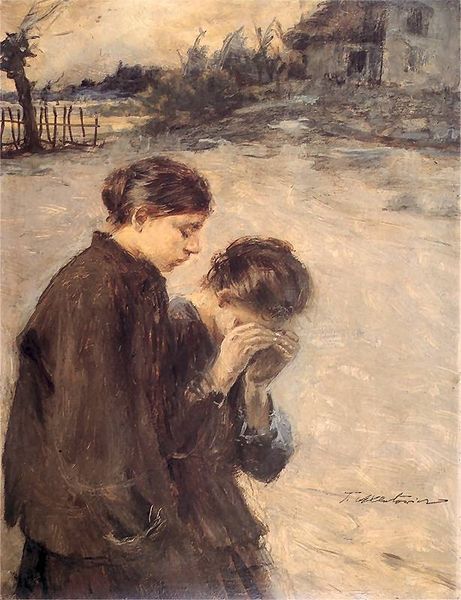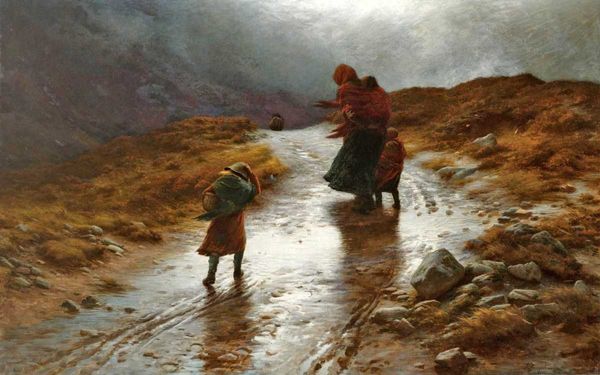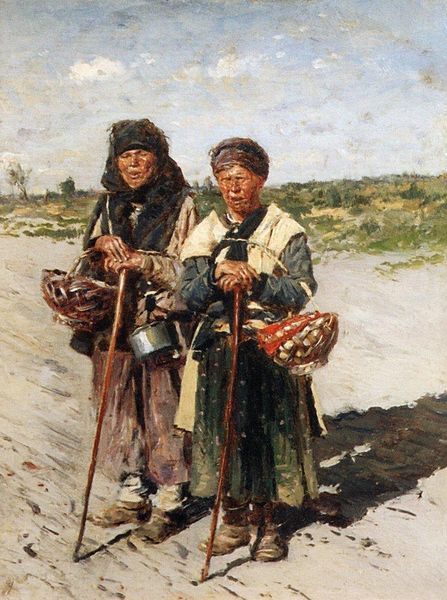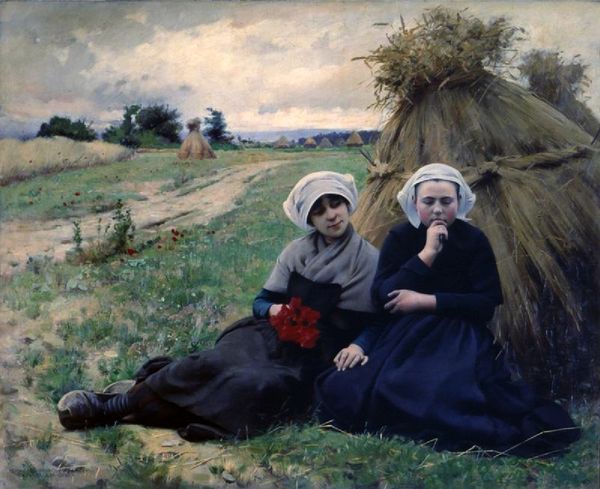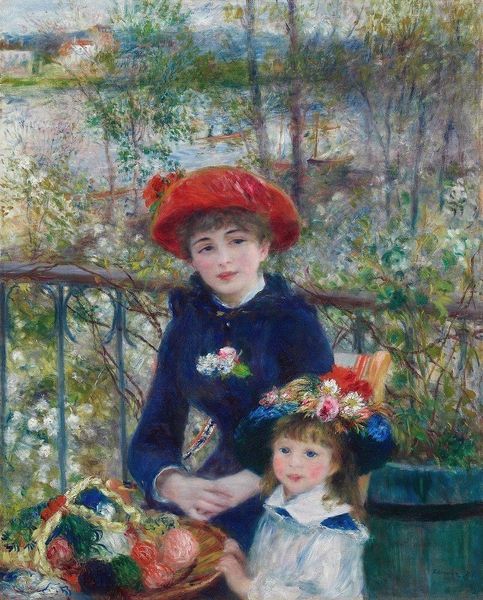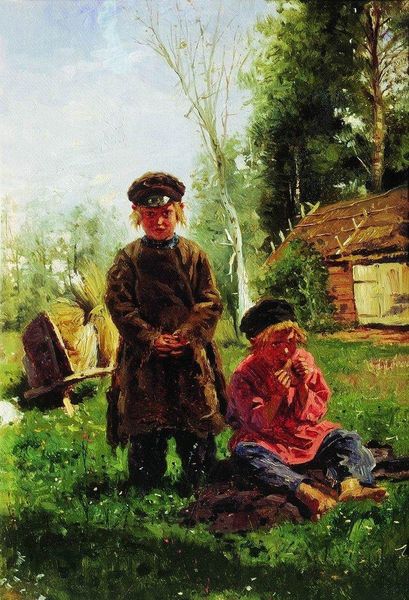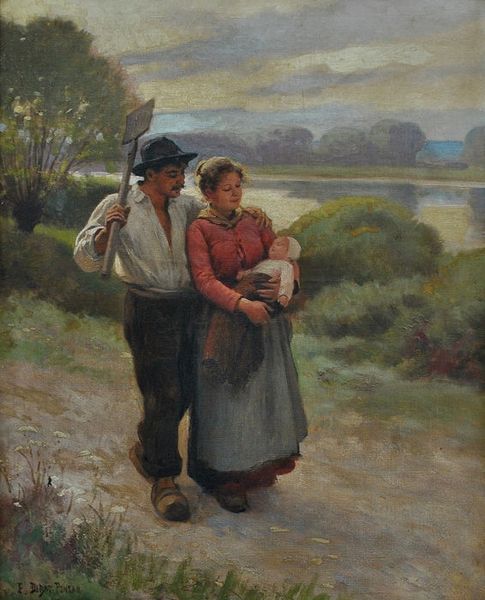
Copyright: Public domain
Editor: This is Nikolay Bogdanov-Belsky's "Country Children," painted in 1915. The figures, rendered in oil paint, have such presence... but it's the landscape that holds my attention, the textures of the mud and snow. What stands out to you in terms of the materials used to create this work? Curator: Consider the textures achieved with oil paint – the mud, snow, clothing, the sheer labor involved in extracting and processing the pigments, grinding them, and then applying layer upon layer to achieve these effects. This isn't just about representing reality; it's about a direct engagement with the material world and a specific type of labor being represented on canvas. How do you think this material focus affects our understanding of the children? Editor: I hadn't considered the labor so explicitly! It highlights their own lived experiences, their relationship with the land they work, doesn't it? Their roughspun clothes, the worn textures... it all speaks to a certain economic reality, emphasized by the paint itself. Does the impressionistic style also add to the dialogue about labor and class? Curator: Absolutely. The loose brushwork and the visible application of paint deny a seamless illusion, reminding us that this is a constructed image, the product of a specific set of choices about material and technique. Think about the fence too – its raw materiality, built laboriously out of simple resources. How might that relate to ideas around consumption at that time? Editor: I see. The contrast between idealized landscapes and the often harsh realities of rural life seems heightened by Bogdanov-Belsky's emphasis on materials and the means of production, challenging, perhaps, some conventional understandings of rural life. Curator: Precisely. By drawing attention to the materiality of both the subject and the medium, the painting prompts us to question what is being represented and how. Editor: That’s a great perspective to keep in mind. Thanks for opening my eyes to how materials tell the story! Curator: My pleasure! It's a valuable lesson to look at not just what’s represented, but *how* it’s been made.
Comments
No comments
Be the first to comment and join the conversation on the ultimate creative platform.
